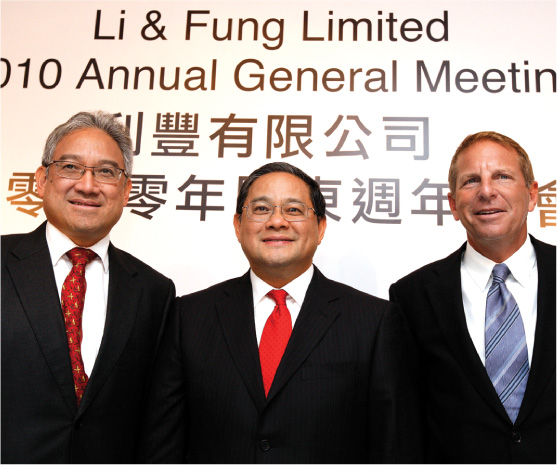Li & Fung: From Guangzhou to You
It’s a very good bet that as you read this, you’re wearing something manufactured in Asia. And if you are, it’s also a good bet that the Hong Kong company Li & Fung was involved in getting your garment designed, produced, and shipped to your local store. From Levi’s to The Limited to Walmart, Li & Fung is a critical conduit from factories around the world to the shopping mall nearest you.

The company was founded in 1906 in Guangzhou, China. According to Victor Fung, the company’s chairman, his grandfather’s “value added” was that he spoke English, allowing him to serve as an interpreter in business deals between Chinese and foreigners. When Mao’s Communist Party seized control in mainland China, the company moved to Hong Kong. There, as Hong Kong’s market economy took off during the 1960s and 1970s, Li & Fung grew as an export broker, bringing together Hong Kong manufacturers and foreign buyers.
The real transformation of the company came, however, as Asian economies grew and changed. Hong Kong’s rapid growth led to rising wages, making Li & Fung increasingly uncompetitive in garments, its main business. So the company reinvented itself: rather than being a simple broker, it became a “supply chain manager.” Not only would it allocate production of a good to a manufacturer, it would also break production down, allocate production of the inputs, and then allocate final assembly of the good among its 12,000+ suppliers around the globe. Sometimes production would be done in sophisticated economies like those of Hong Kong or even Japan, where wages are high but so is quality and productivity; sometimes it would be done in less advanced locations like mainland China or Thailand, where labor is less productive but cheaper.
For example, suppose you own a U.S. retail chain and want to sell garment-
Li & Fung has been enormously successful. In late 2013, the company had a market value of approximately $12.5 billion, with offices and distribution centers in more than 40 countries. Year after year, it continues to post sizeable profits.
Questions for Thought
Question
1. Why do you think it was profitable for Li & Fung to go beyond brokering exports to becoming a supply chain manager, breaking down the production process and sourcing the inputs from various suppliers across many countries?
Question
2. What principle do you think underlies Li & Fung’s decisions on how to allocate production of a good’s inputs and its final assembly among various countries?
Question
3. Why do you think a retailer prefers to have Li & Fung arrange international production of its jeans rather than purchase them directly from a jeans manufacturer in mainland China?
Question
4. What is the source of Li & Fung’s success? Is it based on human capital, on ownership of a natural resource, or on ownership of capital?